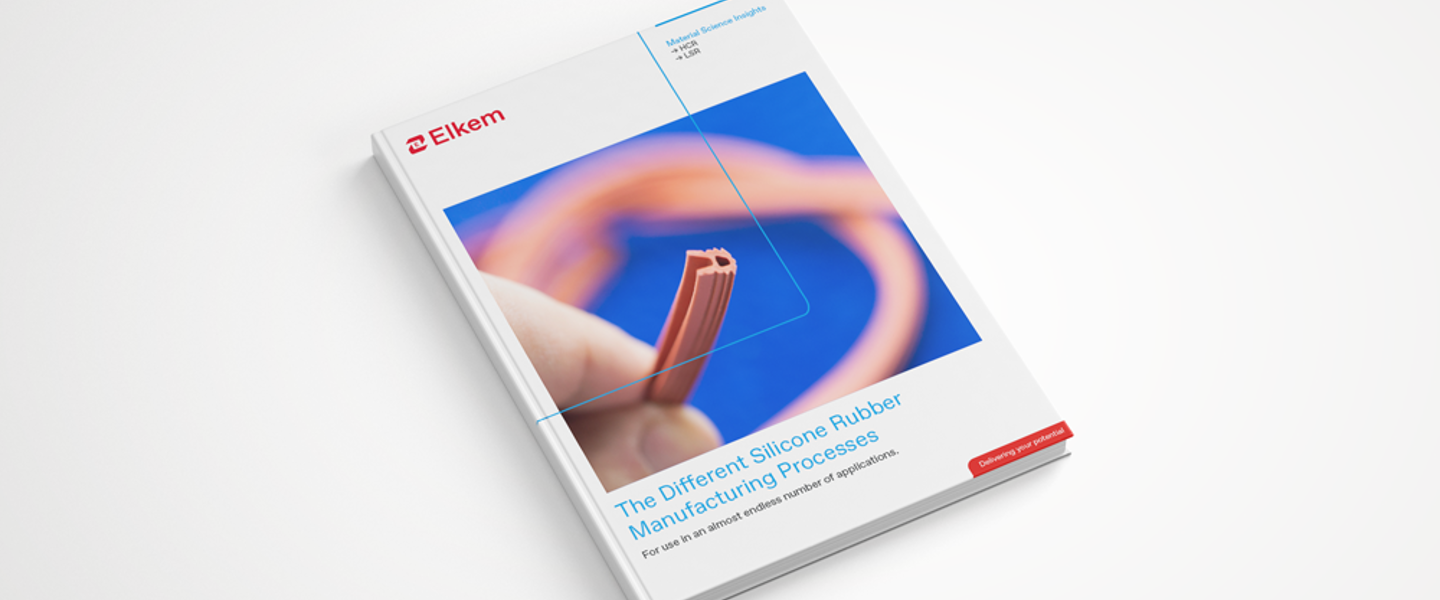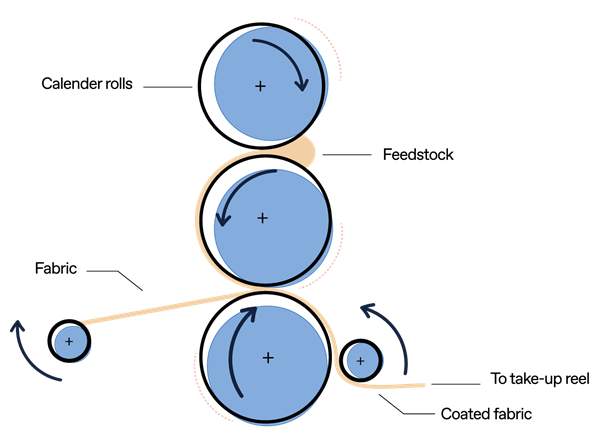- Magazine
- Material science insights
- What is the calendering process for silicone rubber?
What is the calendering process
Calendering is a mechanical process that directs siliconerubber or other plastics such as PVCs or vinyl (and even paper or textiles), through single or multiple pairs of heated hard steel rolls, known as calenders, in a continuous manner to compress and smooth material and form either uniform standalone sheets or hybrid combinations with other materials. The calendering machine is adjusted for pressure and speed to produce different thicknesses, surface finishes and textures. This results in shiny, matte, smooth, adherent or embossed products that are either used directly or further processed to make end products. The calendering process produces long and continuous sheets of uniform thickness that may be implemented into a carrier fabric or laminated onto a film or other materials.

EBOOK - The Different Silicone Rubber Manufacturing Processes
For use in an almost endless number of different applications.
What are the main challenges in the calendering process?
The first and foremost question is to determine the end characteristics being sought and to choose the right materials. High Consistency Rubber (HCR), also referred to as Heat Cured Rubber or High Temperature Vulcanizing (HTV) silicone, is the material of choice. It is made from reactive silicone (usually partly phenylated or prefluorinated vinylated gums) with very high-weight macromolecules and comes in different grades of hardness and formats that can easily be integrated into the calendering system. The sheets are generally produced using compounded catalyzed formulations, RTU (ready-to-use) formulations adapted to the manufacturing process. The vulcanization techniques used include tunnel kilns or ovens, autoclave, rotocure conveyors, etc.
Liquid silicone rubber (LSR) is hardly ever used because it is too fluid and mainly used for liquid injection molding and other techniques, such as extrusion.
Once the proper grade of HCR has been chosen, various additives can provide specific features to the material, such as fumed or precipitated silicas with high specific surface areas to improve mechanical properties, heat stabilizers, plasticizers or anti-structuring agents.
HCR elastomers provide exceptional mechanical strength at temperatures ranging from -50°C to +300°C. They also age well, are chemically inert, stable when exposed to light or oxygen and can be colored easily or even be transparent, ideal for food packaging and paramedical applications.
Once the materials and specifications have been determined, certain precautions must be taken to ensure that the right result is achieved in the actual manufacturing process:
- The calender rolls must be heated to the right temperature for smooth throughput
- If the temperature is too low, the rubber silicone can stick to the rolls
- If the temperature is too high, the material can be scorched or deformed
- The calendering machine must be set at the right speed to achieve a uniform surface and thickness, and avoid the formation of air bubbles
- The material must have the right tack if it is to be combined with other materials such as foils, plastics or textiles
- When the silicone rubber is to be used on a standalone basis, it must have the right release liner so that it does not stick or tear and keeps its original shape when installed.
How does a calendering processing method for silicone rubber works?
What are the main advantages of the calendering process?
The main advantages of calendering processing include:
- The production of durable and versatile semi-finished or finished products in different thicknesses, levels of flexibility and variable compression sets that can be used in a wide range of applications
- High-volume, continuous processing, producing up to three surface meters per minute
- Although the calenders are heated, the process takes place at room temperature
- The possibility of producing standalone sheets (unsupported) delivered in protective liners or products in combination with other materials, including organic or artificial fabrics (polyamide, viscose, polyesters, etc.), glass, plastics, etc.
What are the main applications of the calendering process?
There are almost endless applications, including:
- Liners for construction
- Home decoration products, such as wall, floor, ceiling coverings, upholstery and household items such as tablecloths and shower curtains
- Clothing, including waterproof garments and specially coated protective equipment
- Food contact products, including flexible reservoirs and tanks
- Industrial and transportation components, including conveyor belts, gangways and other transport products, including high-traffic flooring and seating covers
- Autoclavable products for medical applications.
